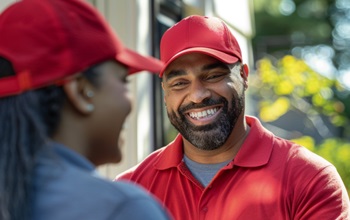
In today's fast-paced world, delivery drivers play an essential role in ensuring we receive our meals, groceries, and packages right at our doorsteps. The convenience of having items delivered has become increasingly popular, especially in the wake of the pandemic, which has led to a surge in delivery services. As we continue to rely heavily on these services, it's crucial to recognize the hard work and dedication of delivery drivers. One of the most tangible ways to show our appreciation is through tipping. In this blog, we'll explore the best practices for tipping delivery drivers to ensure they are fairly compensated for their efforts.
Tipping delivery drivers is more than just a kind gesture; it’s an essential part of their income. Many delivery drivers rely on tips to supplement their base pay, which can often be quite low. These drivers work hard, often facing challenging conditions such as bad weather, heavy traffic, and tight delivery schedules. Tips not only help to compensate for these hardships but also serve as an appreciation for the convenience and service they provide.
Moreover, tipping encourages better service. When drivers know that good service will be rewarded, they are more likely to go the extra mile to ensure your order is delivered accurately and promptly. Ultimately, tipping fosters a positive relationship between customers and delivery drivers, creating a better experience for everyone involved.
When it comes to tipping delivery drivers, there are some general guidelines that can help ensure you’re tipping appropriately:
By following these general guidelines, you can ensure your delivery driver is fairly compensated and encouraged to continue providing excellent service.
While the general guidelines provide a good starting point, there are several factors you should consider that might influence your tipping amount:
Taking these factors into account ensures that your tip reflects the true effort and dedication of your delivery driver, making them feel valued and appreciated.
Different types of delivery services may have varying expectations and standards for tipping. Here’s a breakdown of some industry-specific tips:
Understanding these industry-specific standards helps ensure you tip appropriately based on the type of delivery service, providing fair compensation and recognition for the driver’s efforts.
With the rise of technology, tipping delivery drivers has become more convenient and varied. Here are some modern methods and considerations for tipping in the digital age:
These digital tipping methods offer flexibility and ease, ensuring you can always show your appreciation to delivery drivers, no matter the circumstances.
There are many questions and misconceptions surrounding tipping delivery drivers. Let’s address some of the most common ones:
1. Do delivery drivers already get paid well?
Myth: Many people assume that delivery drivers earn a substantial hourly wage.
Fact: Most delivery drivers earn a base pay that is often below minimum wage, especially when considering the wear and tear on their vehicles and fuel costs. Tips are essential for making their jobs financially viable.
2. Is it necessary to tip if there's a delivery fee?
Myth: Some believe that a delivery fee goes directly to the driver and acts as their tip.
Fact: Delivery fees typically go to the company, not the driver. Tipping is still necessary to directly compensate the driver for their service.
3. Should I tip less if my order is late?
Myth: It’s often assumed that a late delivery warrants a reduced tip.
Fact: Delivery delays are usually beyond the driver’s control, often due to traffic, weather, or high order volumes. It’s best to consider the overall service and the driver’s effort before deciding on a tip.
4. Do drivers remember good tippers?
Fact: Yes, many drivers do remember generous tippers and might prioritize their deliveries in the future, ensuring quicker and possibly more attentive service.
5. Can I give a non-monetary tip?
Fact: While cash is king, drivers appreciate other forms of recognition, such as a kind note, a drink on a hot day, or even a positive review through the app. However, monetary tips are usually the most helpful.
Clearing up these misconceptions helps ensure that delivery drivers receive fair and considerate compensation for their hard work.
Tipping delivery drivers is a simple yet impactful way to show appreciation for the essential services they provide. By following general guidelines, considering specific factors and industry standards, and embracing modern tipping methods, you can ensure that delivery drivers are fairly compensated and motivated to continue offering excellent service.
Remember, your tip can make a significant difference in a driver's day, especially during challenging conditions or busy times. As we continue to rely on delivery services, let's make it a habit to tip generously and thoughtfully, fostering a positive and supportive relationship with those who make our lives more convenient.